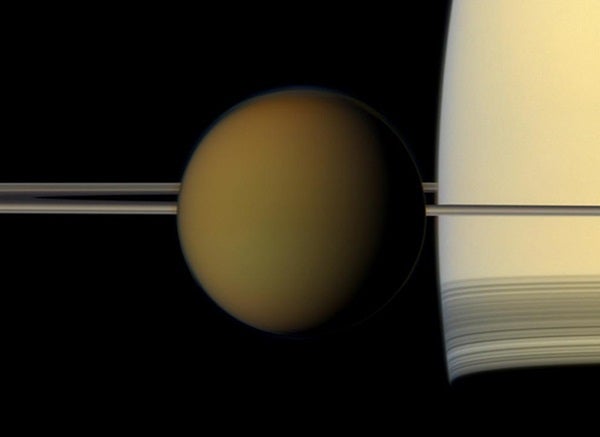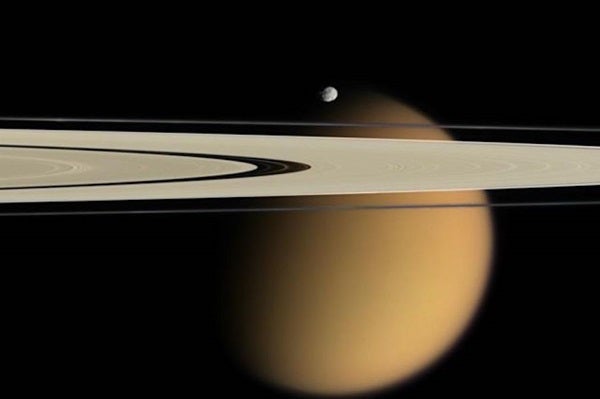Now, according to a recent study published in Nature Geoscience, a team of UCLA planetary scientists and geologists found that these hydrocarbon clouds are not just gently drizzling rain over the surface of the moon. Instead, the researchers discovered that Titan experiences monsoon-like downpours capable of dumping enormous amounts of methane rain in very short periods of time.
UCLA associate professor of planetary science and co-author of the study, Jonathan Mitchell, said in a press release, “The most intense methane storms in our climate model dump at least a foot of rain a day, which comes close to what we saw in Houston from Hurricane Harvey this summer.”
Although Titan’s storms are very intense, they are also relatively rare. They occur only about once per Titan year, which is equivalent to about 30 Earth years. Even if the Titan storms are rare when compared to Earth, they are still much more frequent than scientists anticipated. “I would have thought these would be once-a-millennium events, if even that,” said Mitchell, “So this is quite a surprise.”
The UCLA scientists noted that most of the alluvial fans on Titan are scattered between 50 and 80 degrees latitude, generally concentrated a bit closer to the poles than the equator. This suggests that Titan’s precipitation varies by region, with increased rainfall causing erosion and lake formation, while sparse rainfall causes the formation of dunes.
Though precipitation was highest near the poles, where most of Titan’s seas and lakes reside, the most intense rainstorms occurred near 60 degrees latitude, in the region with the highest concentration of alluvial fans. This indicates that, like on Earth, powerful storms develop when wet, cool air from higher latitudes meets with dry, warm air from lower latitudes.
According to Seulgi Moon, UCLA assistant professor of geomorphology and co-author of the study, the findings show that intense methane downpours can significantly alter Titan’s icy surface, a principle that likely also applies to Mars (which sports its own large alluvial fans), as well as other planetary bodies.
By studying how rainfall influences planetary surfaces, researchers hope to better understand how certain weather patterns can alter a planet’s overall climate, and even its habitability. And, though modeling methane monsoons may not be directly applicable to Earth’s own climate, the more we understand about eccentric weather, the more equipped we are to address climate change here on Earth.











